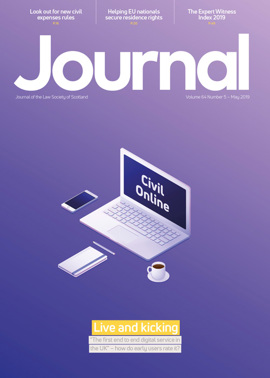Burdens and who can enforce them

Conveyancers know 28 November 2004 as the date on which the feudal system was abolished. It was also when the Title Conditions (Scotland) Act 2003 came fully into force and codified the law of real burdens. But one provision in the Act has proved to be particularly problematic.
Section 53 gives implied rights to land owners to enforce real burdens against other land owners in the case where real burdens were imposed prior to the appointed day. This is subject to the conditions that the properties are “related” and affected by a “common scheme” of real burdens. There will typically be a common scheme in a housing development, but commercial properties can also form part of such a scheme. Neither “related” nor “common scheme” are defined, but s 53(2) gives possible examples of when properties are related.
For post-feudal developments, s 4 of the 2003 Act normally requires the benefited properties to be expressly identified. Section 53 is a transitional provision which deals with the consequences of the common law here not imposing such a requirement.
In 2013 the Justice Committee of the Scottish Parliament received evidence that s 53 causes significant difficulties in practice. The Scottish Government accepted the committee’s recommendation that the provision should be referred to the Scottish Law Commission. In April 2019 the Commission issued its report (Scot Law Com no 254) and a draft bill extending to seven sections. If implemented, the bill would amend the 2003 Act.
Problems with the current law
The report gives an assessment of the criticisms that have been made of s 53 since its enactment. The principal one is uncertainty. For example, the law firm Dentons told the Commission that: “English clients sometimes struggle to understand why the situation is not as clear as it would be south of the border and we feel that the current uncertainty might make it less attractive to buy property in Scotland.” Other criticisms which have been made include complexity, lack of publicity on the burdened property’s title, and drafting issues.
A new provision
The Commission’s view on policy here, which was agreed by almost all its consultees, is that owners of properties within an identifiable “community” (such as a housing estate or tenement building) should have the implied right to enforce any common scheme of real burdens affecting that community against all the other property owners in that community. This is the position in practice for post-feudal developments. The Commission considers that this is the policy which already underpins s 53, but it is unsatisfactorily implemented by that provision.
The report recommends:
- Section 53 (and its sister provision, s 52) should be replaced with one clear provision governing implied rights to enforce real burdens in common schemes.
- The term “common scheme” should be defined.
- The new provision should replace the suggestive examples in s 53 with five bright-line rules. These are: (1) where the properties are flats in the same tenement; (2) where the properties are subject to common management provisions; (3) where the burdens were imposed in the same deed; (4) where the properties share common property (excluding boundary features such as walls); and (5) where the properties are no more than 20m apart (subject to certain conditions).
Preservation scheme
The Commission’s recommendations need to comply with the ECHR, and in particular article 1 of Protocol 1 (the property protection clause). Therefore a scheme is included under which rights under ss 52 and 53 could be preserved by registering a notice. But the Commission expects that most cases of implied rights will be retained under the new scheme without any action having to be taken, because the overarching policy has not changed.
Next steps
It will be for the Scottish Government to decide whether to implement the report. Given the support for this within the profession, it is hoped that it will do so in early course.
In this issue
- Claiming under the advance payment scheme
- Time for a written constitution
- New form F9: worth the wait?
- Wedded to a matrimonial property regime
- Brexit divorce set to increase UK's “skype families”
- Corporate personality: Justice v Doctrine
- Reading for pleasure
- The Law Society of Scotland Expert Witness Index 2019
- Opinion: Judith Robertson
- Book reviews
- Profile: Michael Clancy
- President's column
- Is your legal data being held to ransom?
- People on the move
- Sign up – log in – action!
- Frozen out?
- Taxing times for litigators
- DNA analysis: when research just isn’t enough
- Brexit focus: EU citizen settlement remedies
- Why employers should report on wellbeing
- 3% – and then what?
- 1,000 days of mediation
- Barred from acting
- To name or not to name?
- Enter the “What I Think”
- Fixed penalties and fair trials
- Auto-enrolment: keeping employers on their toes
- Scottish Solicitors' Discipline Tribunal
- Vulnerable accused: a need for knowledge
- Burdens and who can enforce them
- Convener’s final bow
- Public policy highlights
- TCSP review update
- Westminster: answering the call
- Accredited paralegal practice area highlight: family law
- Accredited Paralegal Committee profile
- Nyona named star paralegal
- Ask Ash
- Moving nightmares part 2
- Complaints: seeking consistent practice
- Morally bankrupt?
- For the elderly: how SFE works
- Standing up to challenge






